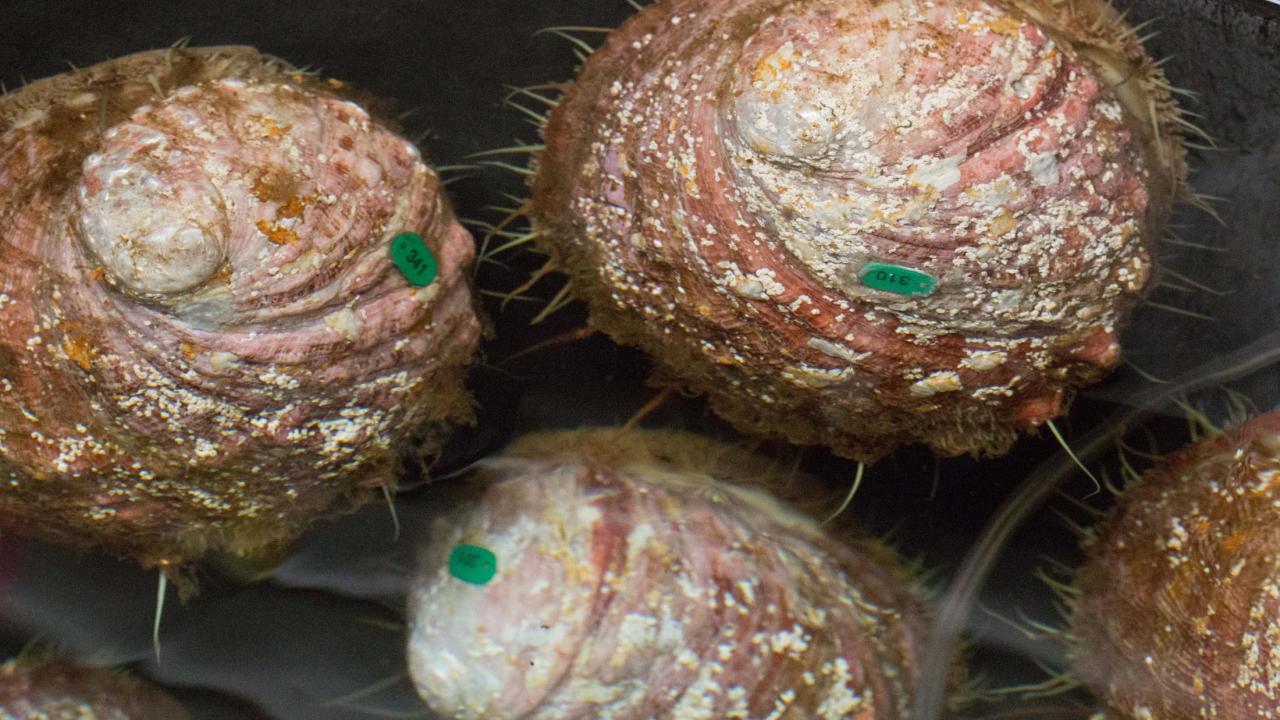
Bringing Back White Abalone, One Spa Treatment at a Time
While most of us use hydrogen peroxide for personal hygiene or wound care, research scientist Kristin Aquilino, has found a unique use for this bubbly chemical solution.
Aqulino, who runs the White Abalone Captivity Breeding program at the UC Davis Bodega Marine Laboratory, is working to breed a new generation of white abalone, an endangered species, with a long-term goal of bringing the formerly iconic seafood species back from the dangers of extinction.
As “broadcast spawners”, adults send their eggs and sperm into the open water to find each other for fertilization. Pairs need to be within a few meters of each other to reproduce successfully.
Due to decades of overfishing, white abalone cannot survive in the wild because the remaining populations are too far apart, often entirely isolated.

To encourage spawning in captivity, researchers put the marine snails in a mild hydrogen peroxide solution. This hydrogen peroxide spa treatment tricks the abalone into thinking others are spawning too. The chemical reaction, which creates free radicals, may be the same or at least similar to the chemical reaction that occurs when another abalone is spawning.
In collaboration with National Oceanic and Atmospheric Administration Fisheries and five other facilities, Aquilino has worked since 2012 to raise and breed these marine snails in the lab. Beset with challenges in the beginning, brood success has grown each year. The Bodega Marine Lab increased its abalone inhabitants from about 30 breeding pairs in 2012 to roughly 13,000 juveniles in 2016. It is now believed there are now more white abalone in captivity than in the wild.
“The great thing about abalone is that their native habitat is actually still relatively intact,” Aquilino said. “If we can make a bunch of white abalone and put them out there and get them to survive, they should do great!”
Their present day predicament results from overfishing in the 1970s, during which about 99% of the population was decimated. More than just a seafood shortage, without the abalone, sea urchins would grow unrestricted and destroy kelp beds and forests. Habitats like these are recognized among the most productive and dynamic ecosystems for marine organisms.
Historically, abalone have been culturally significant in California, as they are quite popular amongst culinary connoisseurs and generations of free divers.
Thank you Kristin Aquilino, NOAA Fisheries and others for working—one spa treatment at a time—to ensure the survival of this species!
